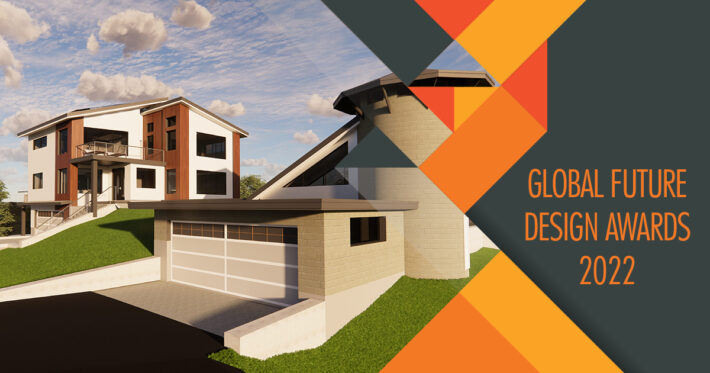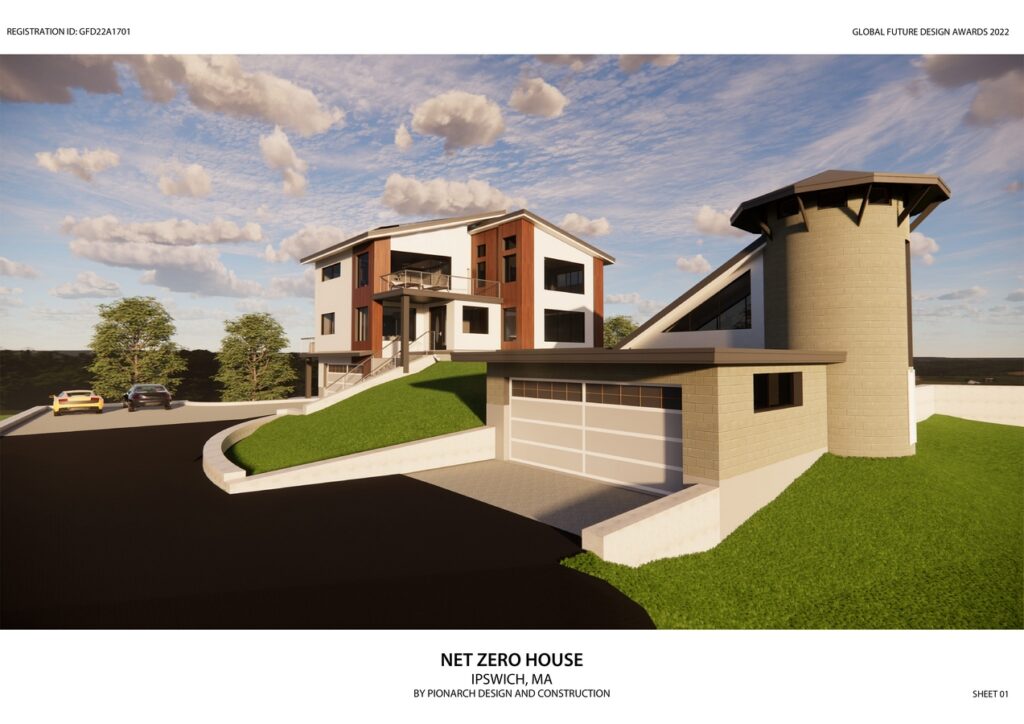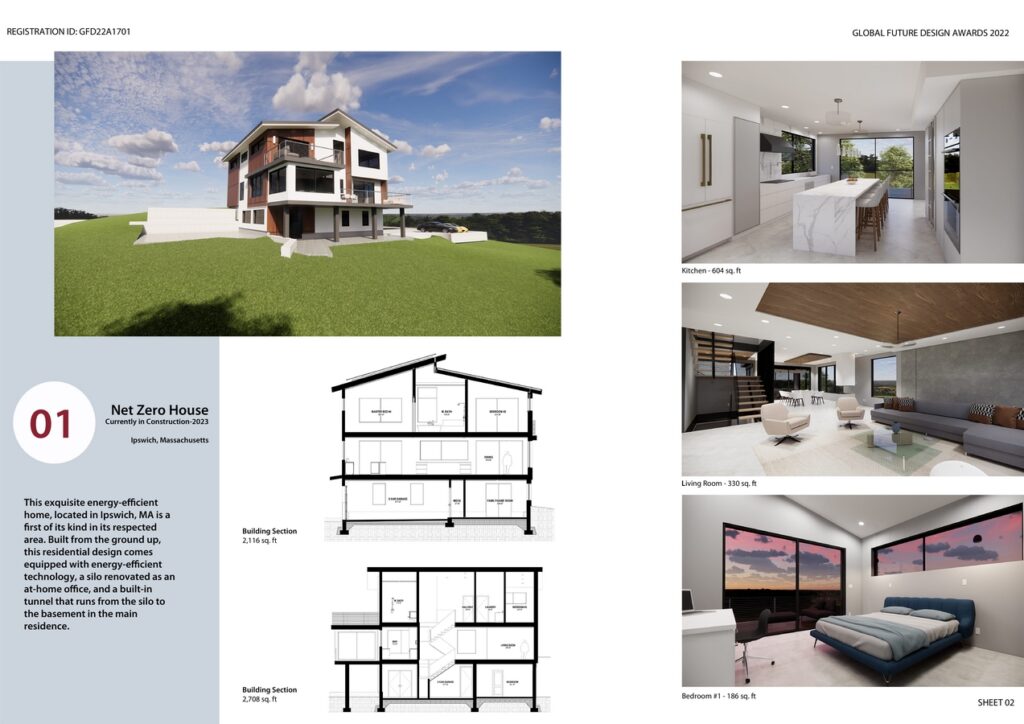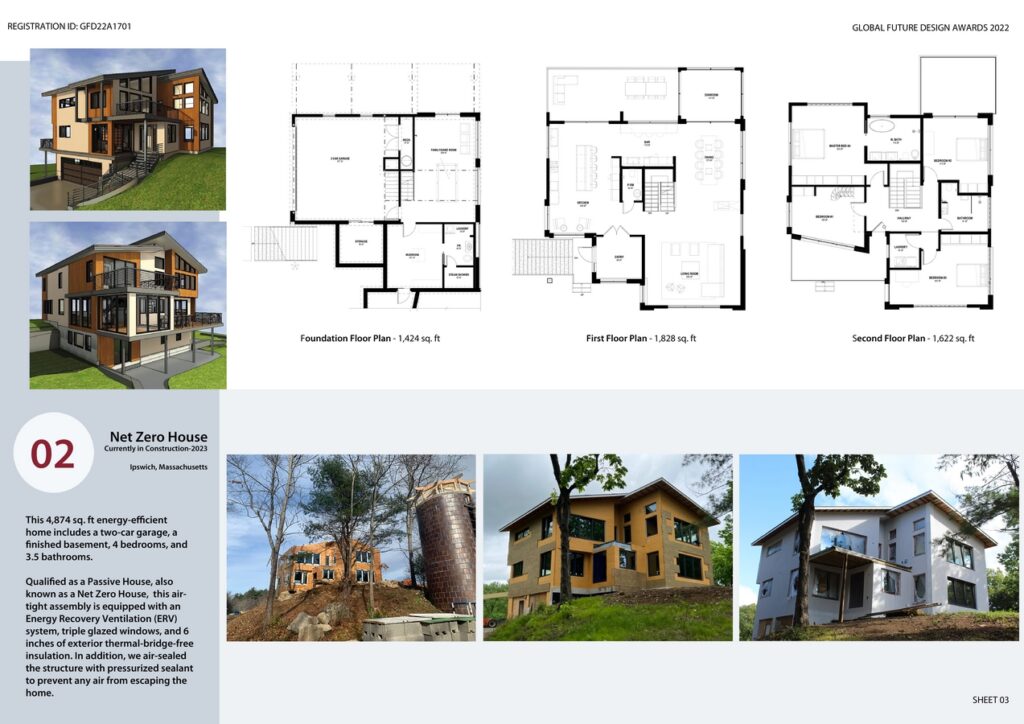This exquisite house is a brand new net-zero home. Is it currently the only net-zero house in picturesque Ipswich, Massachusetts. The house uses the newest systems and technology and it produces more energy that is needed to heat and cool the house. At the front of the property right before the front facade, an existing silo is being renovated as an accessory structure. The silo will serve as home office and will be connected to the main house with a tunnel that will run from the silo to the basement in the main residence.
Global Future Design Awards 2023: Entries Open!
Silver 🏆 Winner
Global Future Design Awards 2022
Net Zero House in Construction, Ipswich, Ma
Residential Architecture (Under Construction)
Firm
Pionarch Design and Construction
Architect/Designer
Lidia Szydlowska
Design Team
Pionarch Design and Construction Team
Location
439 Linebrook Rd, Ipswich, MA 01938
Country
United States
Photographer/Copyright
©Pionarch
The first floor is an open concept design and offers kitchen, dining, living and powder room. You enter the house from the main staircase at the front through a foyer – the wind catcher. With the basement placed on the bottom level, it comes with a play area and a full bathroom with a large steam shower. The entire second floor is sleeping headquarters offering two large bathrooms and two balconies. The house comes equipped with very large, sun-blocking triple glazed windows imported from Poland. The windows showcase the beautiful surrounding New England landscape and neighboring blueberry bushes.
Foundation + Waterproofing Material
Nexcem foundation blocks are made up of wood chips rather than styrofoam or plastic. In this house we used them for foundation walls. This product is made out of 75% recycled products, and it is moisture resistant and energy-efficient.
Roof Design + Materials
The idea behind this roof was to completely air seal the house, to prevent any elements from entering or escaping the structure. In order to do so, we added an insulation layer onto the roof deck. On top of that we installed 2×6 LVLs and used that for our 3 foot roof overhangs on around the whole structure. In a cross pattern with the LVLs, we installed ledger boards, and on top of that we installed aluminum sheet metal. The benefits to aluminum sheet metal roof is: 1. energy efficiency, 2. ease of installation, 3. great to overlay with solar panels, 4. Longevity
Open Truss Joists Structure
TJI® joists allow running cables, wires, and pipes through the ceilings. That also benefits our plumbers and HVAC contractors, because they provide extra space to install pipes and materials without damaging structural elements. TJI® joists help maintain continuity of interior insulation.
Exterior Insulation
For the exterior insulation package we installed 6 inches of insulation, which consists of the three different types. The first line of defense is a waterproofing membrane called SIGA Majvest 500. On top of that, around the entire house, we installed a 3 inch wood fiber insulation called GUTEX Multitherm® 80. Since this particular material cannot receive stucco, we had added a third layer of insulation called rockwool comfort-board. GUTEX Multitherm® is made up of 95% wood fiber and has zero carbon footprint.
Interior Insulation
In addition to the 6 inches of exterior insulation, it was important to add the best interior insulation package for extra protection. We utilized closed cell spray foam between the rafters to prevent any moisture accumulation from the underside of the roof. The rest of the cavities are filled with blown-in cellulose insulation. The overall insulation package will provide us R-values of R-60 on the roof and R-40 within the walls.
HVAC + ERV System
The Energy Recovery Ventilation (ERV) system we used in this house that allows continuous ventilation is a system from Zehnder. This machine has three inch tubes that scatter throughout every room of the house and mixes, filters, and conditions the air from each room. The heating and cooling system consists of an Electric Air Handler SVZ by Mitsubishi. One unit is located in the basement and the second one in the attic.






